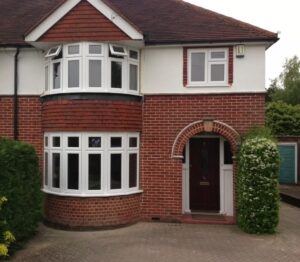Energy-Efficient Windows: An Overview
In the last few years, the need for energy-efficient windows has actually risen, driven by increasing energy expenses, increased environmental awareness, and the desire for enhanced convenience in homes and business structures. Energy-efficient windows are developed to minimize energy usage, boost thermal convenience, and lower greenhouse gas emissions. This thorough guide will explore the features, advantages, and numerous kinds of energy-efficient windows offered in the market.

Comprehending Energy-Efficient Windows
Energy-efficient windows are specifically engineered to decrease energy loss while maximizing natural light and aesthetics. They achieve these objectives through a mix of technologies that improve insulation, minimize air seepage, and reflect or take in solar heat.
Secret Components of Energy-Efficient Windows:
Frame Materials: The product of the window frame considerably impacts its energy efficiency. Typical materials consist of:
- Vinyl: Excellent thermal efficiency and low maintenance.
- Wood: Natural insulator however needs regular upkeep.
- Aluminum: Durable however less efficient unless thermally broken.
- Fiberglass: High resilience and energy performance, often used in high-end applications.
Glazing: The kind of glazing (or glass) utilized is a crucial element:
- Single Glazing: Least efficient; allows substantial heat transfer.
- Double Glazing Quotes Glazing: Two panes of glass with an area in between, considerably enhancing insulation.
- Triple Glazing: Three panes of glass; offers the very best performance however at a higher cost.
Low-E Coatings: Low-emissivity coatings are thin layers applied to glass that show heat back into a structure throughout winter while deflecting solar heat in summer. This function can significantly reduce heating & cooling costs.
Gas Fills: Argon or krypton gas is typically utilized to fill the areas between the panes of double and triple-glazed windows, supplying it with additional insulation properties.
Warm Edge Spacers: These are products used to separate the panes of glass. Warm-edge spacers help in reducing thermal bridging and enhance general window efficiency.
Benefits of Energy-Efficient Windows
The advantages of setting up energy-efficient windows in a structure are significant, both financially and environmentally.
Economic Benefits:
- Lower Energy Bills: By minimizing the amount of heat lost during winter season and heat got in summertime, energy-efficient windows can lead to considerable cost savings in heating and cooling expenses.
- Increased Property Value: Homes with energy-efficient upgrades might have a higher resale worth. Many purchasers actively look for out energy-efficient functions.
- Tax Credits and Rebates: Many regions offer financial incentives for homeowners who upgrade to energy-efficient windows, making them more economical.
Ecological Benefits:
- Reduced Carbon Footprint: By reducing energy usage, energy-efficient windows contribute to a decrease in greenhouse gas emissions.
- Improved Indoor Air Quality: Better insulated homes typically show a reduction in drafts and wetness problems, which can lead to healthier living environments.
Convenience Benefits:
- Consistent Indoor Temperature: Energy-efficient windows assist preserve a steadier indoor temperature, lowering cold spots near windows and eliminating overheating.
- UV Protection: Many energy-efficient windows can block hazardous UV rays, securing furnishings and flooring from fading.
Types of Energy-Efficient Windows
Selecting the right kind of energy-efficient window will depend on different elements such as environment, building style, and spending plan. Below are some commonly utilized types:
| Window Type | Description | Best For |
|---|---|---|
| Casement Windows | Depended upon one side, these windows open outwards, providing exceptional ventilation and airtightness. | Locations needing great air flow |
| Double-Hung Windows | Features 2 operable sashes that move up and down. They enable for flexible ventilation and are easy to tidy. | Traditional-style homes |
| Sliding Windows | These windows move open horizontally, making them simple to operate and perfect for those who have restricted area. | Locations with limited space |
| Image Windows | Set windows that do not open, optimizing views and natural light, often paired with adjustable windows for ventilation. | Living rooms, dining locations |
| Bay and Bow Windows | Extended windows that produce a rack or nook, adding architectural appeal and increased sunlight. | Family spaces, breakfast nooks |
Picking the Right Energy-Efficient Window
When picking energy-efficient windows, homeowners should consider the list below elements:
- Local Climate: Different areas have different climate needs. For example, homes in the northern U.S. might benefit from windows that maintain heat, whereas southern homes may need windows that show heat.
- Window Orientation: The instructions that windows deal with can influence energy performance. South-facing windows might benefit from solar heat gain in winter, while north-facing windows might require more insulation.
- Efficiency Ratings: Look for windows with a great Energy Star score, which accredits them as effective in providing energy effectiveness.
Often Asked Questions (FAQs)
What is the distinction between energy-efficient and standard windows?Energy-efficient windows are created with unique materials and innovations that enhance insulation and decrease energy loss, whereas standard windows might do not have these features, leading to higher energy consumption.
How can I tell if my windows are energy-efficient?Look for indicators such as Low-E finishes, numerous panes of glass (double or triple glazing), and a great energy performance score (like Energy Star).
Are energy-efficient windows worth the investment?Yes, while they might have a higher upfront cost, energy-efficient windows typically save property owners cash on energy expenses and decrease carbon emissions with time.
Can I set up energy-efficient windows myself?While some house owners might take on window installation as a DIY project, professional setup is typically advised to make sure appropriate sealing and insulation.

The length of time will energy-efficient windows last?With correct maintenance, energy-efficient windows can last 20 to 30 years, making them a long-term financial investment for your home.
Energy-efficient windows provide many advantages, consisting of lower energy costs, improved comfort, and minimized environmental effect. By comprehending their features, advantages, and the various types offered, house owners can make informed choices that contribute not just to their own convenience but likewise to a more sustainable future. Investing in energy-efficient windows is not simply a smart option for your wallet; it is a significant step towards producing a greener and more efficient worldwide environment.
